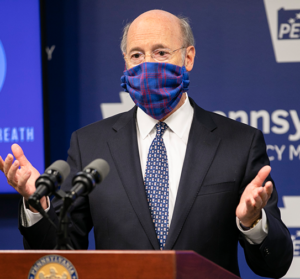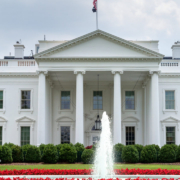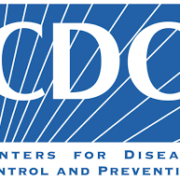The following is the latest COVID-19 information from the state and federal governments as of 3:15 p.m. on Thursday, February 11.
Pennsylvania Update
The Wolf Administration
 Governor Wolf has created a COVID-19 Vaccine Joint Task Force with administration representatives and “…members from each legislative caucus who can share vaccine information and communicate issues and solutions expediently on behalf of and to the broader General Assembly.” According to a news release from the governor’s office, “Task force members will represent their caucus’s point-of-view and work to streamline conversations to focus and drive issues of importance. Wolf Administration members will serve as task force members with the subject matter expertise to listen, collaborate and provide information, answers and suggestions to solve problems in a timely manner.” Members of the task force are co-chairs Acting Secretary of Health Alison Beam and director of the Pennsylvania Emergency Management Agency Randy Padfield; for the Senate Democratic caucus, Senator Art Haywood; for the House Democratic caucus, Representative Bridget Kosierowski; for the Senate Republican caucus, Senator Ryan Aument; and for the House Republican caucus, Representative Tim O’Neal.
Governor Wolf has created a COVID-19 Vaccine Joint Task Force with administration representatives and “…members from each legislative caucus who can share vaccine information and communicate issues and solutions expediently on behalf of and to the broader General Assembly.” According to a news release from the governor’s office, “Task force members will represent their caucus’s point-of-view and work to streamline conversations to focus and drive issues of importance. Wolf Administration members will serve as task force members with the subject matter expertise to listen, collaborate and provide information, answers and suggestions to solve problems in a timely manner.” Members of the task force are co-chairs Acting Secretary of Health Alison Beam and director of the Pennsylvania Emergency Management Agency Randy Padfield; for the Senate Democratic caucus, Senator Art Haywood; for the House Democratic caucus, Representative Bridget Kosierowski; for the Senate Republican caucus, Senator Ryan Aument; and for the House Republican caucus, Representative Tim O’Neal.
Department of Health
The Department of Health has updated its guide to getting the COVID-19 vaccine, which now includes a “Your Turn” feature to help Pennsylvanians learn when they will be eligible to receive a vaccine.
 Department of Health – by the numbers
Department of Health – by the numbers
- The number of new daily cases has continued to decline in recent days.
- The daily death toll remains very high although it, too, is generally declining.
- The numbers of Pennsylvanians hospitalized with COVID-19, in ICU beds because of the virus, and on ventilators are all about 60 percent of what they were three weeks ago.
- Currently, 21 percent of adult ICU beds in the state are unoccupied, as are 16 percent of medical/surgical beds, 11 percent of pediatric ICU beds, 26 percent of pediatric beds, and 34 percent of airborne isolation units. As is usually the case, these numbers tend to decline later in the week.
- As of February 11 the state’s vaccine dashboard shows that 791,000 Pennsylvanians have received their first dose of a COVID-19 vaccine and 335,000 have received both doses of vaccine. These numbers do not include Philadelphia, which operates its own COVID-19 vaccination program.
- The vaccine dashboard shows vaccine totals by county.
Department of State
To expand the number of health care professionals who can administer COVID-19 vaccines, the Department of State has temporarily suspended certain licensure requirements to enable practitioners from other states to administer COVID-19 vaccines without licensure in Pennsylvania provided that they hold a license in good standing in their home jurisdiction and meet the requirements of the federal Public Readiness and Emergency Preparedness (PREP) Act
Around the State
- Despite the declining number of new COVID-19 cases in Pennsylvania, on Tuesday Allegheny County reported more new cases – 405 – than it had on any day during the previous two weeks, according to the Pittsburgh Tribune-Review.
- More the norm is the situation in Westmoreland County, which has been a COVID-19 hotspot in recent months but is now averaging only about 30 percent of the new cases it was a month ago, the Tribune-Review adds.
- During the week of February 3, Montour County led Pennsylvania in COVID-19 vaccines administered per 1000 population with 79, followed by Cameron County (56 per 1000 population), Lackawanna (50), Northumberland (45), and Columbia (45). Pulling up the rear in the state were Pike County (14), Bradford County (13), Fulton County (10), and Potter County (6). The information, from Lancaster Online, does not include Philadelphia, which operates its own vaccination and data collection program. The following is a complete list:
| County | Shots per 1,000 people Feb. 3-9 |
| Montour | 79 |
| Cameron | 56 |
| Lackawanna | 50 |
| Northumberland | 46 |
| Columbia | 45 |
| Centre | 42 |
| Luzerne | 41 |
| Forest | 41 |
| Butler | 38 |
| Clarion | 38 |
| Mercer | 37 |
| Lehigh | 37 |
| Northampton | 36 |
| Sullivan | 36 |
| Armstrong | 35 |
| Mifflin | 34 |
| Union | 34 |
| Juniata | 32 |
| Huntingdon | 31 |
| Jefferson | 31 |
| Schuylkill | 31 |
| Lycoming | 31 |
| Clinton | 30 |
| Wayne | 30 |
| Blair | 29 |
| Clearfield | 29 |
| Westmoreland | 29 |
| Allegheny | 28 |
| Crawford | 28 |
| Wyoming | 28 |
| Carbon | 27 |
| Cambria | 27 |
| Snyder | 27 |
| Elk | 26 |
| Delaware | 26 |
| Montgomery | 26 |
| Franklin | 26 |
| Lancaster | 25 |
| Susquehanna | 25 |
| Lawrence | 25 |
| Greene | 25 |
| Cumberland | 23 |
| Erie | 23 |
| Bucks | 23 |
| Fayette | 22 |
| Chester | 22 |
| Washington | 21 |
| Indiana | 21 |
| York | 21 |
| Tioga | 21 |
| Warren | 21 |
| Somerset | 19 |
| McKean | 19 |
| Berks | 19 |
| Monroe | 18 |
| Lebanon | 17 |
| Venango | 17 |
| Dauphin | 16 |
| Beaver | 16 |
| Bedford | 16 |
| Adams | 15 |
| Perry | 15 |
| Pike | 14 |
| Bradford | 13 |
| Fulton | 10 |
| Potter | 6 |
- The National Football League has offered the stadiums of all of its teams to serve as mass vaccination sites. This idea has been received with limited enthusiasm in Philadelphia, the Philadelphia Inquirer reports.
Resources to Consult
Pennsylvania Department of Human Services
Pennsylvania Department of Health
Centers for Disease Control and Prevention
Federal Update
 The White House
The White House
- The White House has announced the membership of its COVID-19 Health Equity Task Force. See this White House fact sheet to learn more about the task force, its objectives, and its members.
- The White House has announced the introduction of a community health center vaccination program next week, with doses of vaccines to be sent directly to such facilities, and an increase in the supply of vaccines to be shared with states, tribes, and territories. Learn more from a White House fact sheet.
Centers for Medicare & Medicaid Services
- The Families First Coronavirus Response Act requires Medicare Part B to cover beneficiary cost-sharing for provider visits when a COVID-19 diagnostic test is administered or ordered. CMS has updated the list of codes (note: this link leads to a zip file that can be downloaded) that physicians and non-physician practitioners can use with the Cost-Sharing (CS) modifier. Go here to learn more.
- CMS has revised the MLN Matters article “Medicare Fee-For-Service (FFS) Response to the Public Health Emergency on the Coronavirus (COVID-19)” to clarify billing instructions in the skilled nursing facility benefit period waiver – provider information section.
- CMS has modified the previously extended deadline for third quarter 2020 submission of Hospital Consumer Assessment of Healthcare Providers and Systems (HCAHPS) data and extended the submission deadline for electronic clinical quality measures for acute-care hospitals and prospective payment system-exempt cancer hospitals. Learn more about how this affects specific reporting requirements and their changing deadlines.
HHS and CMS COVID-19 Stakeholder Calls
HHS Clinical Rounds Peer-to-Peer Virtual Communities of Practice
HHS’s Office of the Assistant Secretary for Preparedness and Response sponsors COVID-19 Clinical Rounds Peer-to-Peer Virtual Communities of Practice that are interactive virtual learning sessions that seek to create a peer-to-peer learning network in which clinicians from the U.S. and abroad who have experience treating patients with COVID-19 share their challenges and successes. These webinar topics are covered every week:
- EMS: Patient Care and Operations (Mondays, 12:00-1:00 PM eastern)
- Critical Care: Lifesaving Treatment and Clinical Operations (Tuesdays, 12:00-1:00 PM eastern)
- Emergency Department: Patient Care and Clinical Operations (Thursdays, 12:00-1:00 PM eastern)
Go here for information about signing up to participate in the sessions and go here for access to materials and video recordings of past sessions.
 CMS Stakeholder Calls
CMS Stakeholder Calls
CMS hosts recurring stakeholder engagement sessions to share information about the agency’s response to COVID-19. These sessions are open to members of the health care community and are intended to provide updates, share best practices among peers, and offer participants an opportunity to ask questions of CMS and other subject matter experts.
CMS COVID-19 Office Hours Calls
Tuesday, February 23 at 5:00 – 6:00 PM (eastern)
Toll Free Attendee Dial In: 833-614-0820; Access Passcode: 2528725
Audio Webcast link: go here
Tuesday, March 16 at 5:00 – 6:00 PM (eastern)
Toll Free Attendee Dial In: 833-614-0820; Access Passcode: 4177586
Audio Webcast link: go here
Tuesday, April 6 at 5:00 – 6:00 PM (eastern)
Toll Free Attendee Dial In: 833-614-0820; Access Passcode: 2769397
Audio Webcast link: go here
Food and Drug Administration
- The FDA has issued an emergency use authorization (EUA) for bamlanivimab and etesevimab administered together for the treatment of mild to moderate COVID-19 in adults and pediatric patients (12 years of age or older weighing at least 40 kilograms [about 88 pounds]) who test positive for COVID-19 and who are at high risk for progressing to severe COVID-19. The authorized use includes treatment for those who are 65 years of age or older or who have certain chronic medical conditions. Learn more from:
- the emergency use authorization letter issued by the FDA to the manufacturer of the two monoclonal antibodies
- an FDA fact sheet for providers
- an FDA FAQ on use of the two drugs in combination
- an FDA fact sheet for patients, providers, and caregivers
- The FDA has issued a final guidance document presenting its policy for temporary compounding of certain alcohol-based hand sanitizer products during the COVID-19 pandemic.
 Centers for Disease Control and Prevention
Centers for Disease Control and Prevention
- The CDC has published a checklist with steps health care workers should take in preparation for the transport and arrival of patients with confirmed or possible COVID-19.
- The CDC has updated its interim infection prevention and control guidance for health care workers during the COVID-19 emergency.
- The CDC has again updated its recommended strategies for optimizing supplies of N95 respirators.
- The CDC has introduced several documents that seek to encourage the use of masks to protect against COVID-19 and to use masks more effectively. Those documents are:
- an updated summary of why and how to wear masks
- information about the results of new research on how to improve the fit of cloth and medical procedures masks to improve their ability to reduce exposure to COVID-19
- a consumer-oriented document that offers updated information about using masks more effectively. This is the document that suggests wearing two masks as an option for greater protection.
- Another consumer-oriented, updated guidance document on wearing masks.